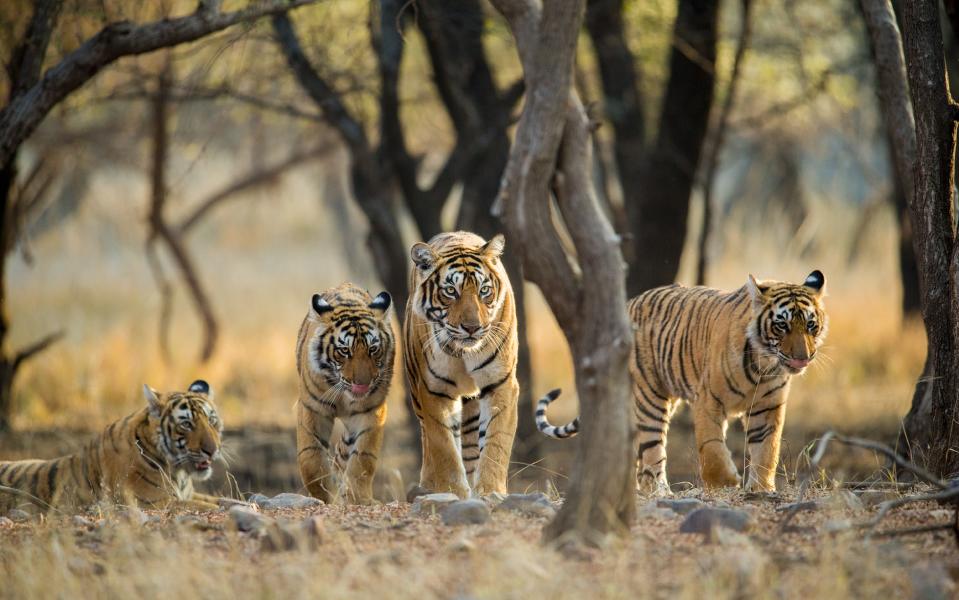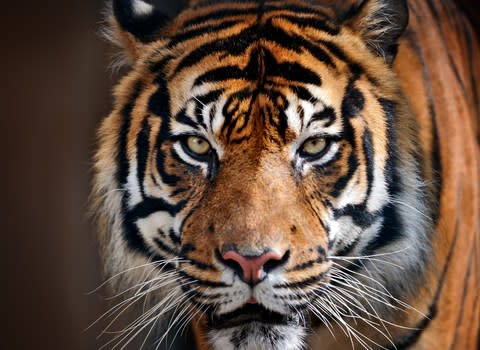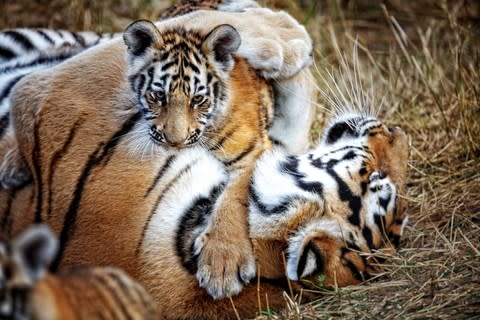Where to see the tigers of Dynasties – and what happened after the filming stopped

The final episode of David Attenborough’s Dynasties took viewers to India to meet Raj Behra, a tigress trying to raise four cubs but facing the twin pressures of a dwindling habitat and fearsome rivals.
Where was the episode shot?
Bandhavgarh National Park in Madhya Pradesh, which is home to around 80 tigers. Guides working in the protected area know them well and when the female known as Raj Behra fell pregnant, director Theo Webb was given an opportunity to tell the story of an endangered species raising her cubs in a changing world.
“She’s under pressure from all sides,” he told Telegraph Travel last month. “Bandhavgarh is a really successful park, but unfortunately they’ve run out of space. There’s nowhere for the tigers to go because they’re surrounded by humanity.”
In the 45-degree heat of the day, Webb admitted that tigers mostly retreat to the shade and sleep. But he warned: “They can do anything at any time.”
On one occasion, Raj Behra made a surprising midday pursuit. “We knew she was sitting in a meadow, but my attention wavered when a peacock started to display. Suddenly, she ran out of the thick grass and chased the peacock. That’s an amazing moment in the film.”
Even more remarkable is the footage of mother and cubs in their den, a scenario rarely filmed and certainly not in so much detail. Webb’s team used a five metre-high tripod and remote camera with a zoom lens, operated by a joystick. “To witness tender moments when those cubs are no longer than your forearm and they’re with a huge cat – it’s extraordinary,” he said.

So how can I see them?
Naturetrek, one of the UK’s more affordable wildlife holiday companies, offers a nine-day escorted “India – Bandhavgarh Tiger Reserve” tour from £2,295 including flights. Departs October 26, 2019. Visit naturetrek.co.uk.
October to March is peak season for Bandhavgarh. The monsoon rains rejuvenate the park between November and February, but the drier period from March to May is often conducive to easier tiger spotting. The park closes to visitors during the sweltering summer months (July 1 until October 15).
Where else can I see tigers in the wild?
The world’s tiger population has fallen from around 100,000 a century ago to fewer than 4,000 – but tourism, it is argued, can help prevent their numbers falling further. It generates revenue for conservation efforts, as well as the local population – so they see tigers as something worth protecting. “Responsible well managed nature and safari tourism... is the very best way to save India’s forests, its iconic tigers and its extraordinary biodiversity,” says the Tour Operators for Tigers association.

Our safari expert, Brian Jackman, explains the appeal of a trip to see India’s tigers: “Big cats don’t come any bigger than a male Bengal tiger. Ten feet long from nose to tail and weighing in at around 600 pounds they are the ultimate carnivores, and to see a tiger slipping like a living flame through the silver-tasselled elephant grass is something that will live with you forever.
“No wonder the tiger is India’s national animal. That familiar striped visage with the baleful amber eyes is every bit as emblematic as the Taj Mahal, and the quest to find one will take you deep into the heart of Mother India like no other journey.”
“Sadly, loss of habitat and uncontrolled poaching has sent tiger numbers tumbling. In 2010 there were no more than 1,700 left in the whole of India, but since then there has been an encouraging recovery, with a current population heading for 2,500.
“Unlike the African lion, you have to work hard to find your tigers in their dense forest habitat, but a week or two in the national parks of Madhya Pradesh should provide you with some memorable sightings.”
He recommends Bandhavgarh, but also Pench (the setting for Kipling’s Jungle Book) and Kanha, a national park the size of Surrey. Exodus’s 16-day “Land of the Tiger” tour visits all three. Prices from £2,499.

Ranthambore National Park in northern India is another popular location for tiger sightings; at the last count, there were 22 living there. A nine-night break, including two days in Ranthambore and visits to Jaipur, Delhi and the Taj Mahal, costs from £1,502pp, based on a March 22 departure.
Another option is Tadoba Andhari Tiger Reserve, the largest national park in the central state of Maharashtra. It is home to more than 80 tigers, as well as leopards and sloth bears. “The park has the highest density of tigers per square mile anywhere in India, so the chances of a sighting are relatively high,” wrote Lisa Grainger after a visit in 2015. This means it is popular, however – so expect a small queue of jeeps each morning.

What happened to Raj Behra?
The demoralising reality demonstrated in last night’s episode, explains our TV critic, is that humans “have bitten vast chunks out of tiger territory and tigers fight one another for what’s left”. Raj Behra, already forced to ward off incursions into her territory by Solo, her daughter from a previous litter, was killed in a fight with an unknown rival in June 2018.
How can I see the other stars of Dynasties?
See our guide to spotting lions, Emperor penguins, chimps and painted wolves.

